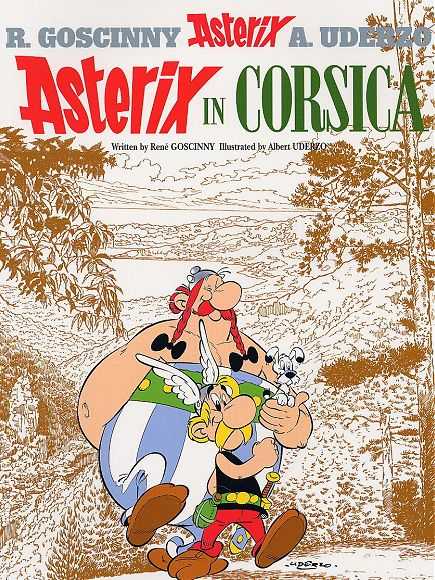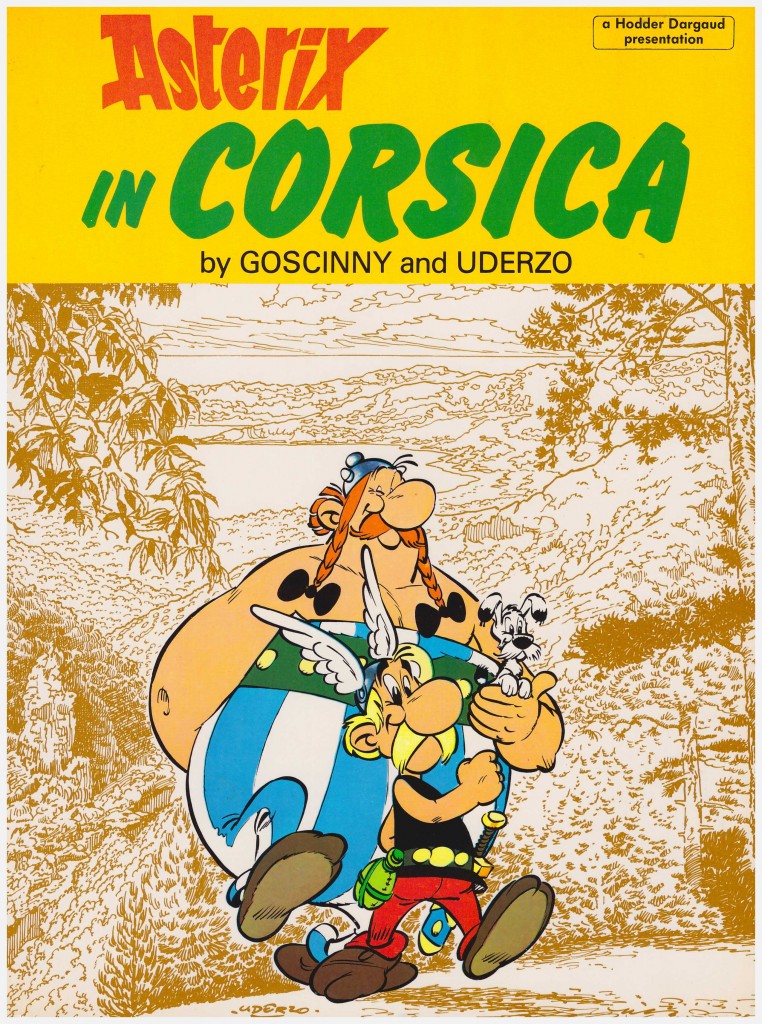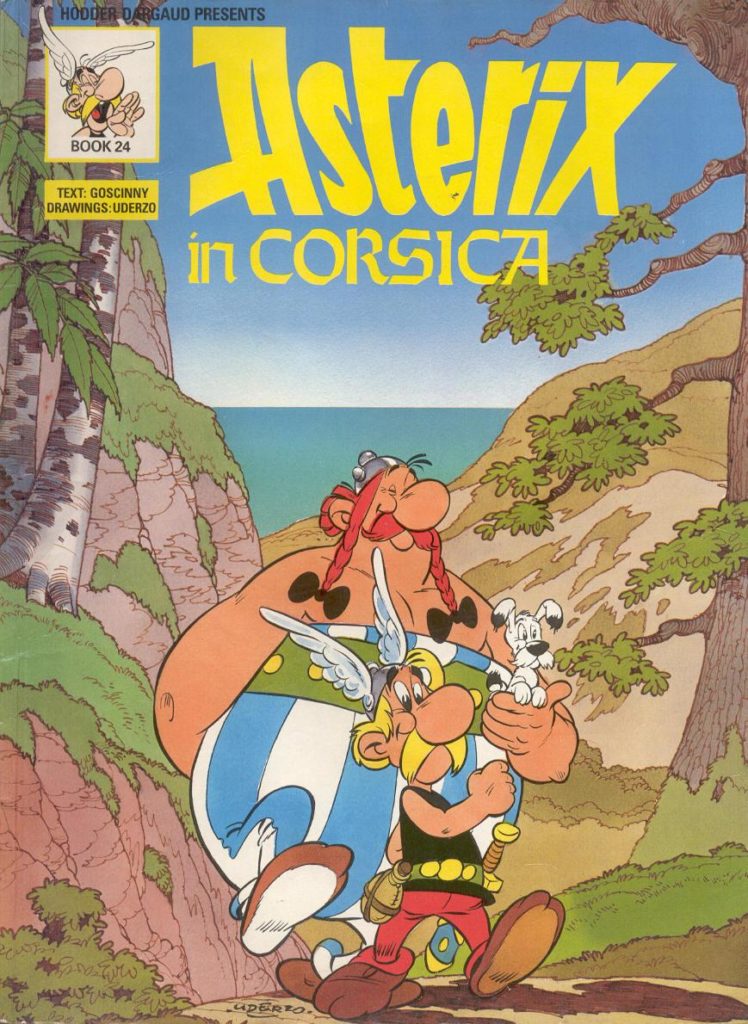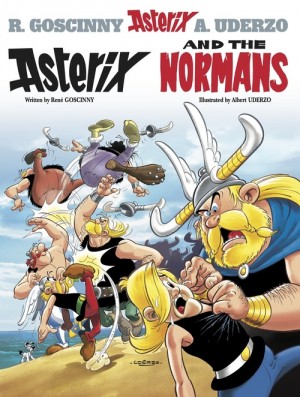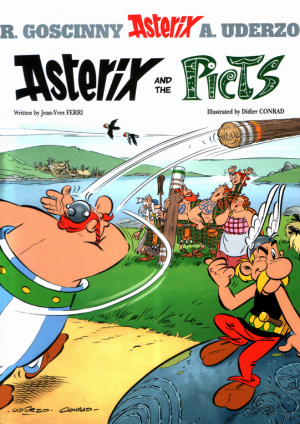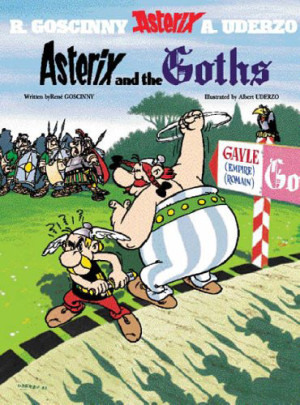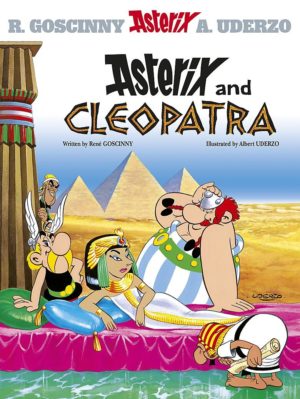Review by Frank Plowright
The 20th Asterix adventure, Asterix in Corsica bears the odd distinction of being the top selling Asterix volume in France, but among the lowest selling English language editions. The discrepancy perhaps arises from the island dwelling Corsicans, the most southerly area of France, presenting a ready-made set of stereotypes recognisable to any Frenchman, while not being an overly familiar area to many English speakers.
A unique aspect of this book is that it opens not with a map of Gaul magnifying the area occupied by Asterix and his village, but with a map of the fortifications around the Corsican coast. René Goscinny worked overtime creating 46 puns for the camp names, as did magnificent English translators Anthea Bell and Derek Hockridge. Modicum, Humdrum, Opposum, Welcum, Strontium, Quoderatdemonstrandum (West). It’s a literate person able to identify all references. Other notable elements include a rare appearance from the pirate crew more fully integrated into the plot rather than just providing a short gag.
The story begins with a party to celebrate the Victory of Gergovia, permitting cameos from those Asterix and Obelix have met on their travels. Making a celebratory raid on the nearby Roman camp of Totorum, the Gaulish visitors return with a freed Corsican warrior. As he’s having problems with a particularly dictatorial Roman governor, Pernicious, Asterix and Obelix escort him home.
Although from Marseille, Eric Cantona might have modelled his public persona on the depiction of proud and haughty Corsican warrior Boneywasawarriorwayayix, although he was in fact based, visually at least, on then Pilote writer Paul Ginolli. He apparently didn’t recognise himself as caricature until it was pointed out to him. Running gags about Corsica include food considered a delicacy that’s unpalatable anywhere else in Gaul, a reputation for less than vigilant electoral scrutiny and for being idle, living in a perpetual state of vendetta, and several references to Corsica’s most famous son, Napoleon Bonaparte.
By the 20th album one might assume there was nothing further to add about Albert Uderzo’s superlative cartooning, but he provides surprises again. There’s a sequence set in the woods that lazier (perhaps Corsican!) cartoonists might have delivered by copying a single illustration, and it would have worked just as well. Minor variations indicate Uderzo actually redraws the panel thirteen times. Later in the book there’s a great half page panorama of assorted Corsican clans on the attack, and the decision to relate the eventual battle via the rambling of four seated old men is inspired.
This is certainly from the golden period of Asterix, but not quite up to the best volumes. Unless you’re French, perhaps.
